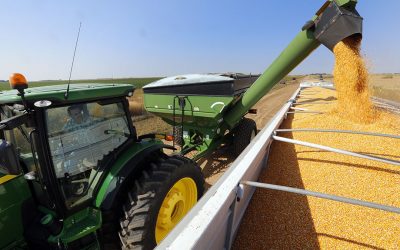New technologies reduce pressure of corn demand
Sparked by aggressive ethanol mandates by the government, the debate over whether the US can produce enough corn to meet the demand for both food and fuel continues to grow.
Biotechnology Industry Organization, and Ken McCauley, president of the National
Corn Growers Association think that there will be enough corn for food and
fuel.
Crop shortages
Critics, including the Earth Policy Institute,
assert that using more crops for ethanol will lead to shortages of corn and
other commodities for food use. As American farmers grapple with the reality of
the demands that the biofuel goals place on production, they have often been met
with heightened negative rhetoric. In the Des Moines Register Greenwood and McCauley express their views on the food or fuel
debate.
Both authors stress that the debate is poorly supported by
facts. They say that the choice is between greater energy dependence and
economic growth in the US and the continued reliance on foreign oil.
Corn production will grow
Studies predict that yields on
corn production will grow from 148 bushels/acre now to 173 bushels/acre in 2015
with the use of new biotech corn hybrids. By 2015, according to the National Corn
Growers Association, grain production will continue to satisfy all food,
animal feed and export demands with 5.95 billion bushels remaining for ethanol
and bioproducts. Following these facts Americans will not have to choose between
food and fuel.
Those 5.9 billion bushels of grain could conservatively
produce 15 billion gallons of ethanol, or about 10% of the nation’s expected
gasoline demand. This level of production is due not only to agricultural
biotechnology, but to the advances in industrial biotech that have made the
production of ethanol more efficient.
New technologies will make it
possible to use the whole plant to produce ethanol instead of just the cob. It’s
estimated that by using the entire corn plant, other crop residues and dedicated
energy crops to produce fuel would yield more than 70 billion gallons of ethanol
per year.
“With a mature ethanol industry,
aided by advances in industrial biotechnology, farmers can continue to harvest
and sell two crops from every field – one for food and one for fuel. The Natural
Resources Defense Council says that this will provide a significant economic
boost to America’s heartland, creating new jobs and increasing farm income by $5
billion annually by 2025,” the authors stated.











